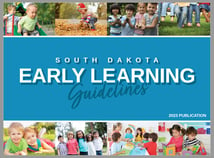
SD Step Ahead
The greatest invention in the world is the mind of a child. ~~Thomas Edison
This website is devoted to children, recognizing that learning begins from birth and continues through experiences, exploration, interactions, and attention. It emphasizes the importance of equipping children with the tools they need to excel even before they enter kindergarten. The first step toward achieving this goal is through our own education. Throughout the site, you'll discover developmentally appropriate goals for children at different age levels—infant, toddler, and preschooler. You'll also find practical ideas to support children in reaching their full potential at each stage of development. Research underscores that children who receive quality care and education are not only better prepared for school but also for success throughout their lives.
The Early Learning Guidelines are designed to be useful to a broad range of educational professionals, including parents. In this document, adults can refer to anyone who works with and cares for children: teachers, caregivers, early childhood educators, early interventionists, home visitors, parents, etc. The document also refers to “children” generically, which is intended to include infants, toddlers, and preschool-age children.







